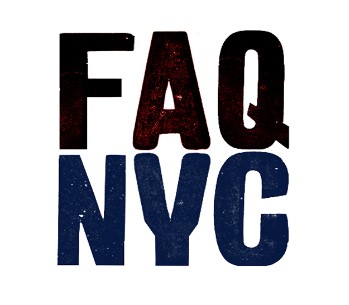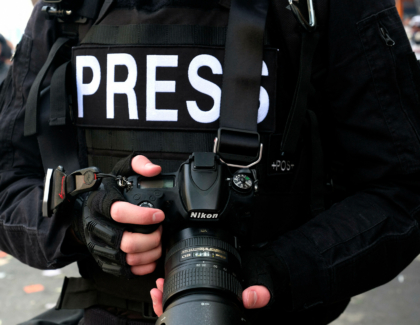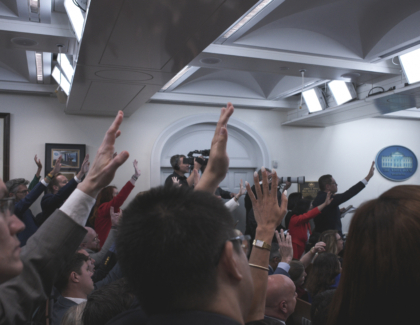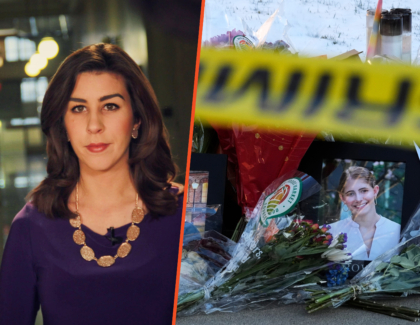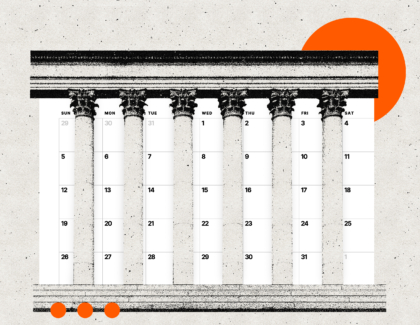Sign up for the daily CJR newsletter.
As a co-writer of Politico New York’s morning newsletters, and an early adopter to Twitter, I played a role in accelerating the local news cycle, pushing more and more content to people earlier and faster. Sometimes, that acceleration was necessary. Information about Hurricane Sandy, or a deadly car accident can require it. Other times, it was not.
Which is why I’m helping to start a new newsroom for people drowning in content.
FAQ NYC is a weekly news podcast that takes a focused look at one local story, to give the context a person needs to be smart. That’s it. We have a weekly newsletter that offers more reporting, information, and data on that story, and sometimes on other ones. Maybe a few quotes from other podcasts too—we like that medium and want to promote the culture. We’re funded by a grant from Civil, a blockchain company trying to create a much-needed new economic model for the journalism industry while protecting our work from capricious owners. How news is created and how news is paid for are linked, and you can’t change one without the other.
At FAQ, we don’t want to tell you what’s just happened. We want to explain why, and what that means for what might happen next. With all eyes on Trump in some sense, there’s far too little of that happening locally. Sometimes, it feels like people see “local” as synonymous with “parochial.” FAQ’s first episode is about John Liu, the former City Comptroller whose mayoral campaign got derailed by a federal investigation. He was never charged and he’s made a bit of a comeback, as a state senate candidate riding a progressive wave that is finally catching up to where he says he has been, politically, for quite some time.
While many national news organizations are expanding, local ones are shrinking. The number of news publishing jobs in New York City has steadily been dropping—and online outlets have not replaced those jobs, in quantity or quality. According to the US Bureau of Labor Statistics, in 2000, there were 10,882 jobs at newspapers in New York City—reporting, editing, human resources, etc. By 2016, that number was 7,362.
RELATED: Who suffers when local news disappears
Magazines got it even worse: from 32,302 jobs in 2000 to 18,824 in 2016. Online publishing and broadcast jobs gained more than 20,000 jobs during this time, but, as anyone who’s ever been online can tell you, not all internet publishing jobs are the same. Listen to this episode of Reply All about the cottage industry of shitty stories that appear on news websites as trashy clickbait. There’s big money to be made in repacking sensational stories, which go to the clickbait factories and to the sites that host them. So, if the website is for an otherwise respectable news outlet is short on cash, they have every incentive to put clickbait crap on their site. And you, the reader, suffer through more content and less news.
Another result of having fewer reporters and more content is that news today seems to burst out of nowhere: Look, another subway crisis! Turn around, it’s a school shooting! Did you see this viral video? By the way, meet this person we never told you about: She’s your new congressperson.
The result? If you don’t know what’s happening around you, everything becomes distant, every story becomes an emergency and every person becomes an other. That estrangement disconnects people, and you can imagine, if you don’t already know, what happens next. “It’s a lot easier to hate the media if you…don’t see hard-working reporters at your town hall, or your courthouse or the school board,” ProPublica’s Alec MacGillis explained in this fantastic speech at a Knight-Wallace Fellowship event last fall. (MacGillis did the program in 2010–11; I did it in 2017–18.) “You glare at them because you have no idea who they are. They’re just strangers with nice clothes and sharp glasses.” And, “if you don’t have local news, [it] make[s] you feel more disconnected from any kind of civic or community fabric. It’s going to make you feel more isolated. And it’s going to send you in search of information elsewhere,” he said.
If you don’t know what’s happening around you, everything becomes distant, every story becomes an emergency and every person becomes an other.
As proof, MacGillis recalled a conversation he had with a swing voter in Ohio back in 2016, named Tracie St. Martin. MacGillis said, “[Traice] herself is aware of what an easy mark she was, how shaky her information sources are. ‘No one that’s voting knows all the facts,’ she told me that first day we met. ‘It’s a shame. They keep us so f—ing busy and poor that we don’t have the time.’”
The reason I went into that fellowship is exactly because of this accelerated news cycle. I’ve always wanted to write about New York in a book, or a magazine piece that looks at the bigger themes shaping the daily events I was rushing to report. But there was never any time. When I was a young reporter at the Queens Tribune, I wrote about neighborhood zoning fights, and churches looking to sell their property because their congregations had dwindled. I usually wrote about these and other stories as stand-alone events, never giving myself enough time to step back to ask, What is happening here? I felt like I got even less time the more coverage areas I picked up, writing about New York City and then New York state politics.
RELATED: Cuts at the Daily News highlight a local news crisis
Finally, I realized I had to stop, step back, and unplug after the November elections in 2016. I was at my apartment, then in Crown Heights, wondering how, just a few hours earlier, all the pundits and prognosticators (myself included) failed to see Trump’s path to victory.
At the Knight-Wallace Fellowship, I and the 18 other mid-career journalists looking to re-tool their careers had to follow three rules: Live in Ann Arbor; show up to fellowship events; and, most importantly, don’t write professionally. In the fall of 2017, it felt like a forced, and needed, detox from a news cycle that had accelerated and emotionally electrified. The other journalists I spoke with in and out of the program seemed to want to get off the merry-go-round of immediate, unprecedented, history-making news—even for just a moment.
And as much as I knew that’s what I needed to do, to get some clarity about the news landscape, I was petrified to try it. Because news reporting jobs are harder to hold onto. Would stepping back to catch my breath mean the cycle moves on without me? Will readers notice when I come back?
News—and the infinite number of other things that people say you should pay attention to—can feel like a cacophony. Where do you go to find the start of that major story in the headline? Maybe the New York Times podcast, The Daily, will discuss it. Or WNYC’s Brian Lehrer Show, or NY1—all very good outlets. But they only have so many minutes a day to devote to any given story, let alone a local one. We are getting buried in content, and need more context.
I turned 40 this week, so, I’m a bit more contemplative about the concept of time, now more than ever. Time is the most precious thing, and we don’t want to waste yours.
ICYMI: A reader became my stalker. Is this the new normal for journalists?
Has America ever needed a media defender more than now? Help us by joining CJR today.



